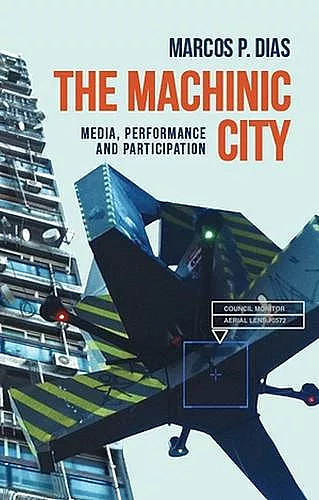The Machinic City
Media, Performance and Participation
Format:Hardback
Publisher:Manchester University Press
Published:23rd Mar '21
Currently unavailable, and unfortunately no date known when it will be back

As human and machine agency become increasingly intermingled and digital media is overlaid onto the urban landscape, The machinic city argues that performance art can help us to understand contemporary urban living. Dias analyses several performance art interventions from artists such as Blast Theory, Rafael Lozano-Hemmer and Rimini Protokoll, which draw from a rich history of avant-garde art movements to create spaces for deliberation and reflection on urban life and to speculate on its future.
While cities are increasingly controlled by autonomous processes mediated by technical machines, Dias analyses the performative potential of the aesthetic machine, as it assembles with media, capitalist, human and urban machines. The aesthetic machine of performance art in urban space is examined through its different components — design, city and technology actants. This unveils the unpredictable nature and emerging potential of performance art as it unfolds in the machinic city, which consists of assemblages of efficient and not-so-efficient machines.
'Dias’ inspiring study makes clear that cities and machines are not always smart. His fascinating case studies show how performance art is perfectly placed to reveal the unpredictable, uncanny, powerful, playful and dysfunctional aspects of both. Drawing on perspectives ranging from philosophy and machine aesthetics to posthumanism and urban studies, Dias shines new light on our contemporary experience of "the machinic city" in bold and remarkable ways.'
Steve Dixon, Professor at LASALLE College of the Arts, Singapore, and author of Cybernetic-Existentialism and Digital Performance
'The Machinic City is, by its nature, a wide ranging study, bringing together diverse areas of thought and practice, but it is held together with and orbits around the central case study, which activates much of the key thinking and insight related to the notion of the machinic city. It is here, in the fresh and insightful analysis and account of A Machine to See With, that the concepts informing the study really sing and where they are put to work most effectively to offer us new understandings of how this particular mode of performance - positioned
in and interacting with public city spaces through participation using computational mobile devices and technologies - actually functions, breaks down and emerges as something new and unexpected. This makes the book a worthwhile read for anyone interested in those types of performance, the work of Blast Theory more generally, as well as in seeing an example of how Latour’s ANT can be incisively applied to performance in urban spaces. It will appeal to theorists and practitioners of performance with computational digital technologies and those who create participatory performance work in public, city spaces. It is also a great text to share with students who might be trying out these types of making, revealing how all elements of a performance in public space can become constitutive (and disruptive) of the intended dramaturgy.'
Joanne Scott, University of Salford, International Journal of Performance Arts and Digital Media
ISBN: 9781526135780
Dimensions: 216mm x 138mm x 14mm
Weight: 404g
216 pages